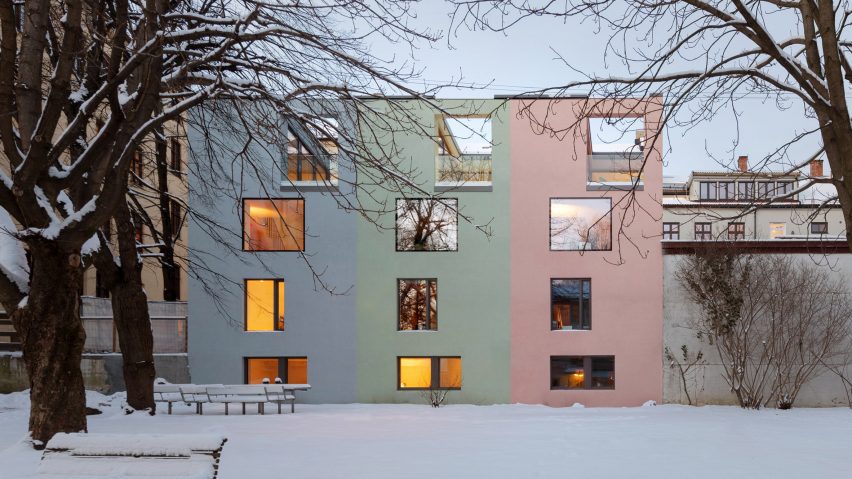
Reiulf Ramstad Arkitekter converts derelict carpentry workshop into trio of townhouses
Architecture studio Reiulf Ramstad Arkitekter has replaced a derelict carpentry workshop in Norway with a set of three pastel-coloured townhouses named Sagene Wood Trade.
Located in a back garden in northern Oslo, the townhouses accommodate compact timber-filled living spaces arranged across three levels.
The development occupies a small site and builds upon an existing carpentry workshop, which was partially demolished due to its derelict condition.
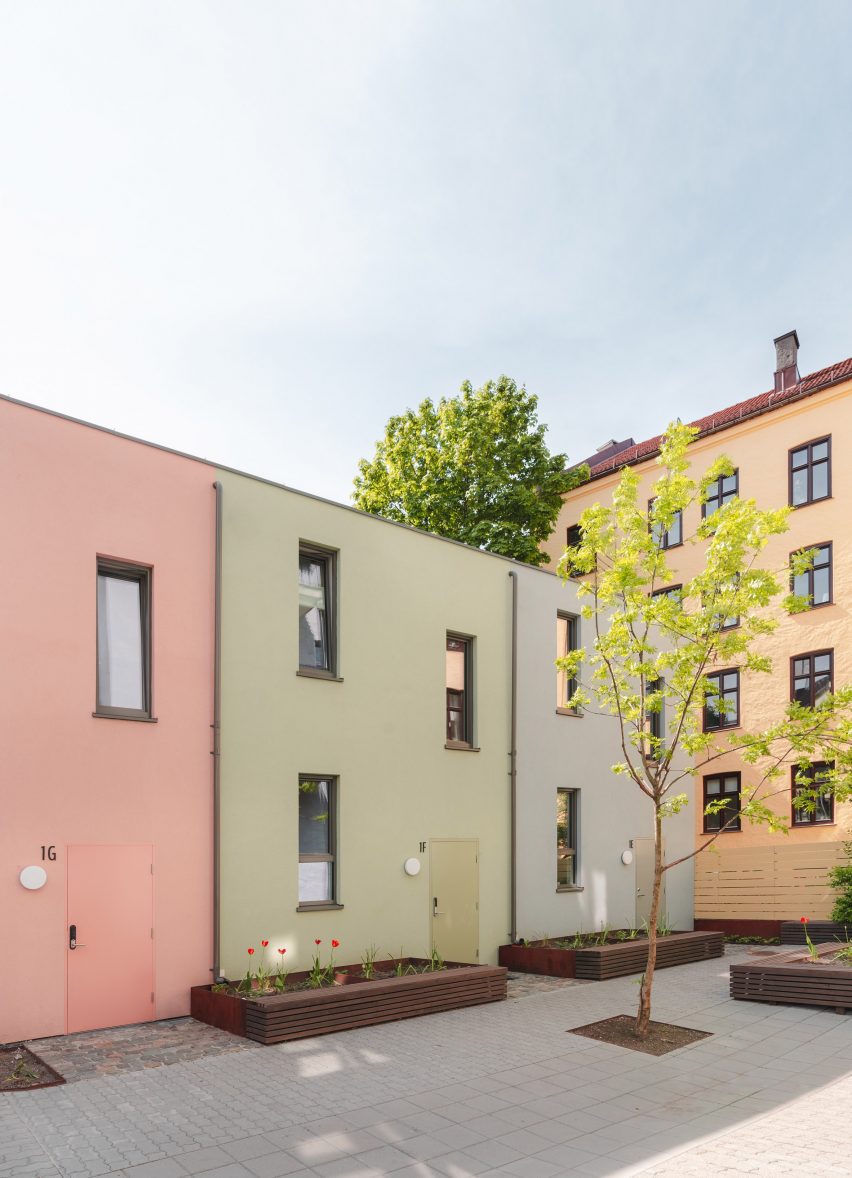
To convert the remaining portion of the workshop, Reiulf Ramstad Arkitekter added a steel structure and divided the space into three separate homes using concrete walls.
"We had to demolish everything inside because it was not in good condition," architect Quentin Desfarges told Dezeen.
"So we implemented the new structure which is exposed concrete walls between apartments and steel for the rest of the structure."

Arranged side by side, the townhouses feature almost identical facades that are painted in pastel shades of blue, green and pink.
Three large rectangular windows on each facade let natural light into the different levels of the homes, while a rectangular opening frames views from the top-floor balcony.
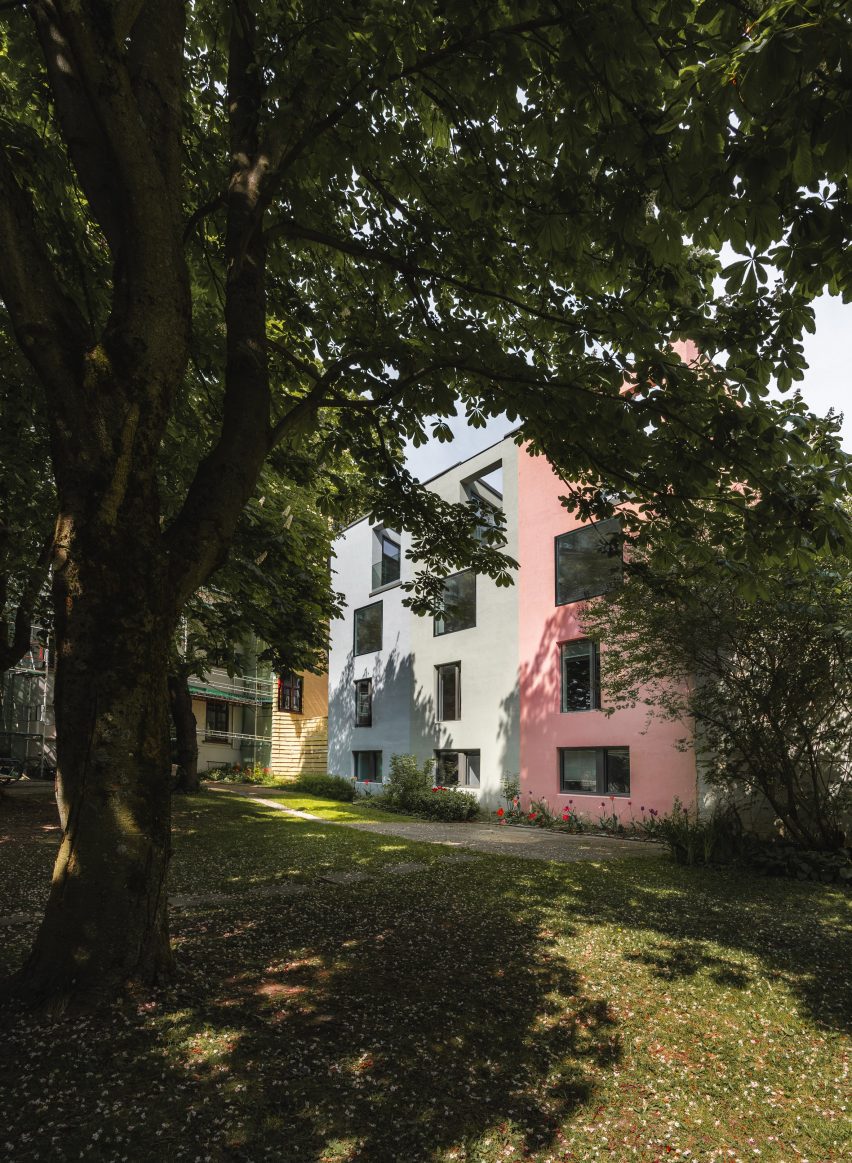
"The colour scheme of the townhouses is based on the familiar colour palette of Oslo's older plaster-covered brick buildings," Reiulf Ramstad Arkitekter explained.
Inside Sagene Wood Trade, the rooms are spread across various levels, including double-height spaces and mezzanine levels. The bedrooms are placed downstairs to allow the living areas to enjoy the views from the upper floors.
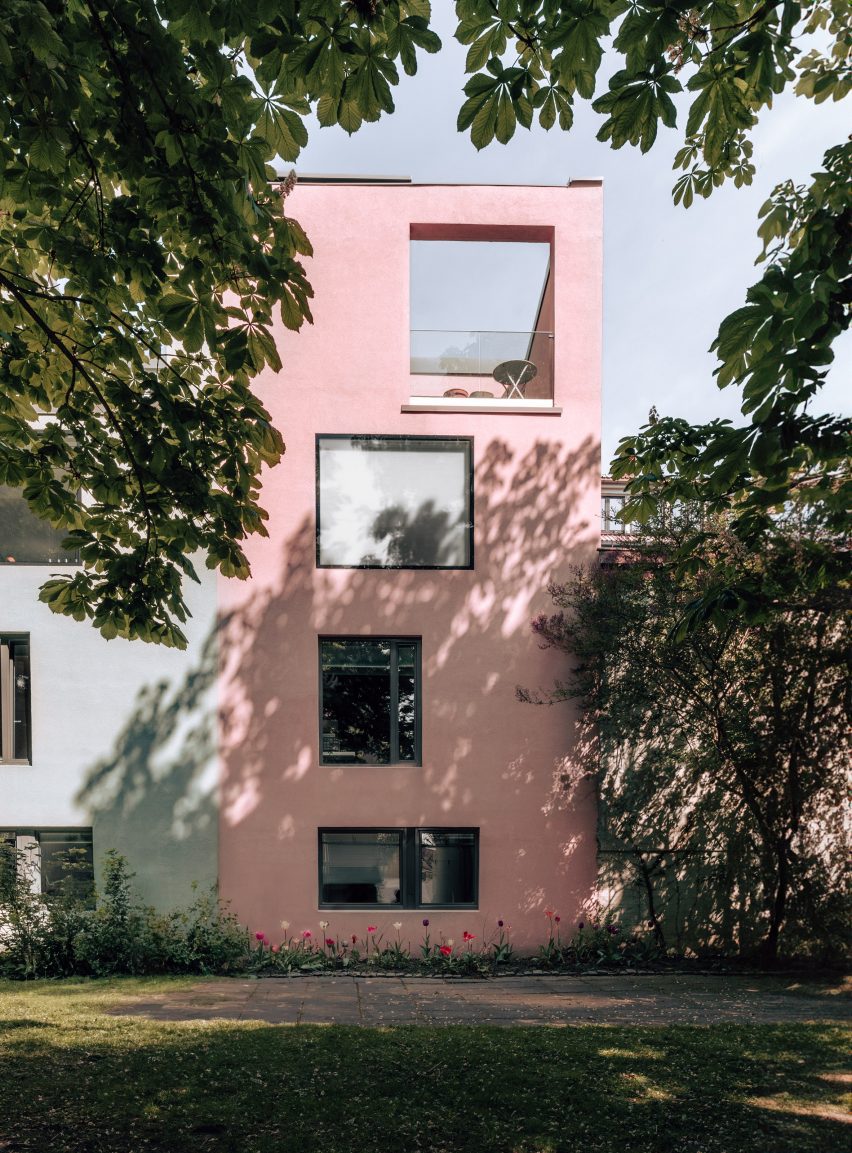
"The idea was to create three vertical houses, or townhouses, where bedrooms are located downstairs in a clever compact and efficient way which host different family situations," said Desfarges.
"In addition to that, there are good possibilities to redistribute the rooms according to their type of lives."
The downstairs bedrooms feature wooden floors that draw from the site's previous use, as well as white-painted and exposed concrete accent walls. Smaller windows were added to the lower levels of the houses to provide privacy.
"The neighbours located in front of the south facade were keen for the houses to not have big windows on the first floors," said Desfarges.
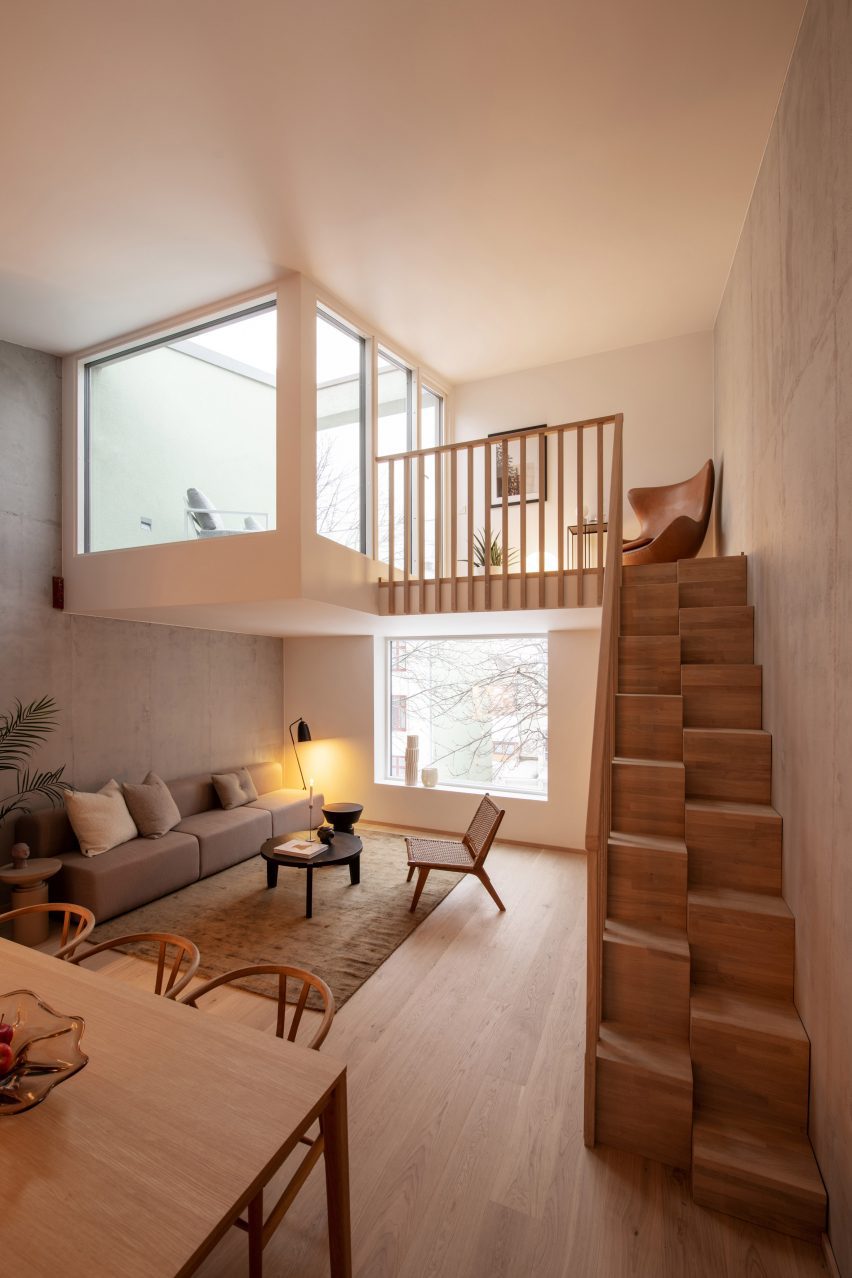
"This imposition made us think that it would be nicer to have living rooms and kitchens on the top floors which provide better views and at the same time implement bigger windows higher up, while bedrooms, with windows that get smaller the further down you go, are located in the first two floors," added Desfarges.
Above the bedrooms, the main living spaces occupy a large open-plan room with a mezzanine level connecting to a semi-outdoor balcony.
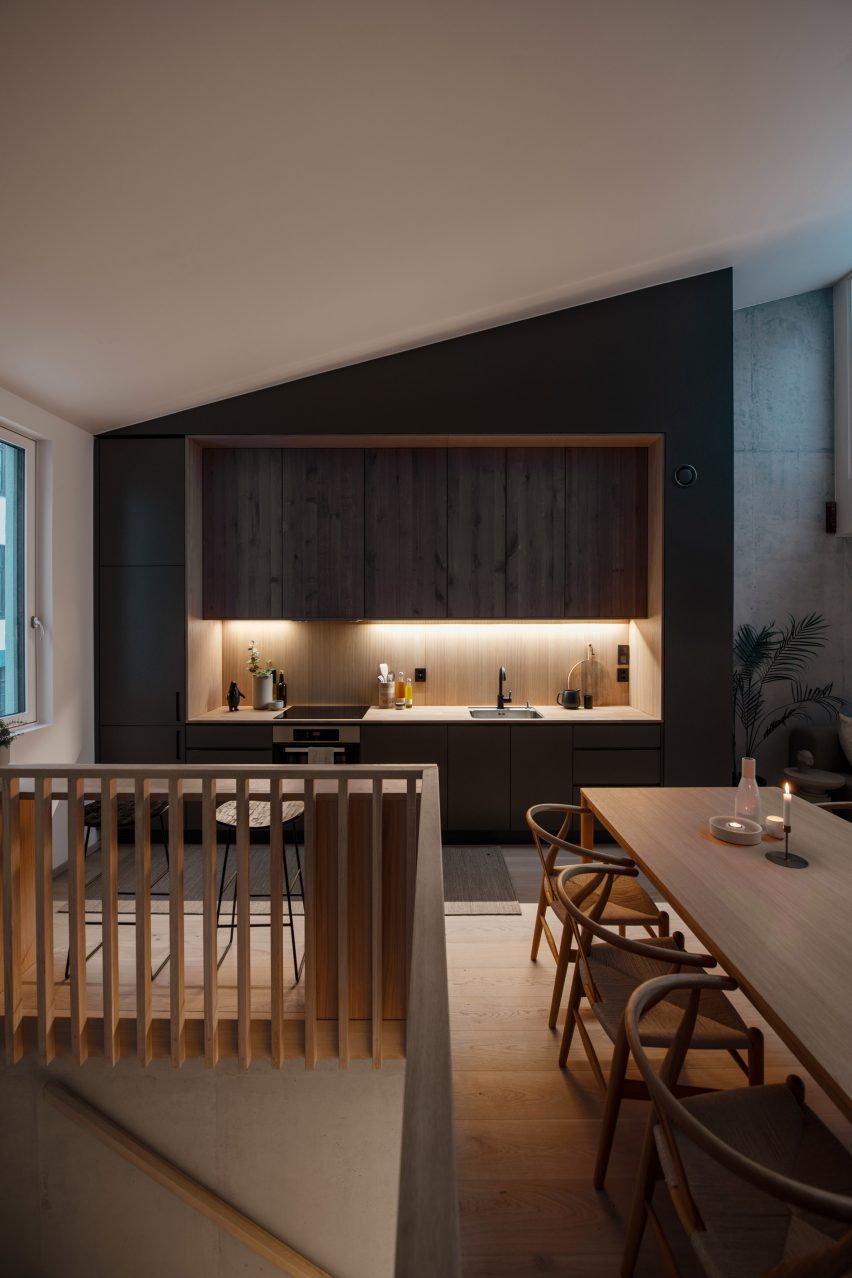
To help divide this space, the studio used the staircase leading up to the mezzanine to mark the different areas, which comprise a kitchen, living room, and dining area.
With the mezzanine level suspended over the living space, the kitchen and dining area enjoy double-height sloping ceilings that offer a feeling of openness within the compact arrangement.
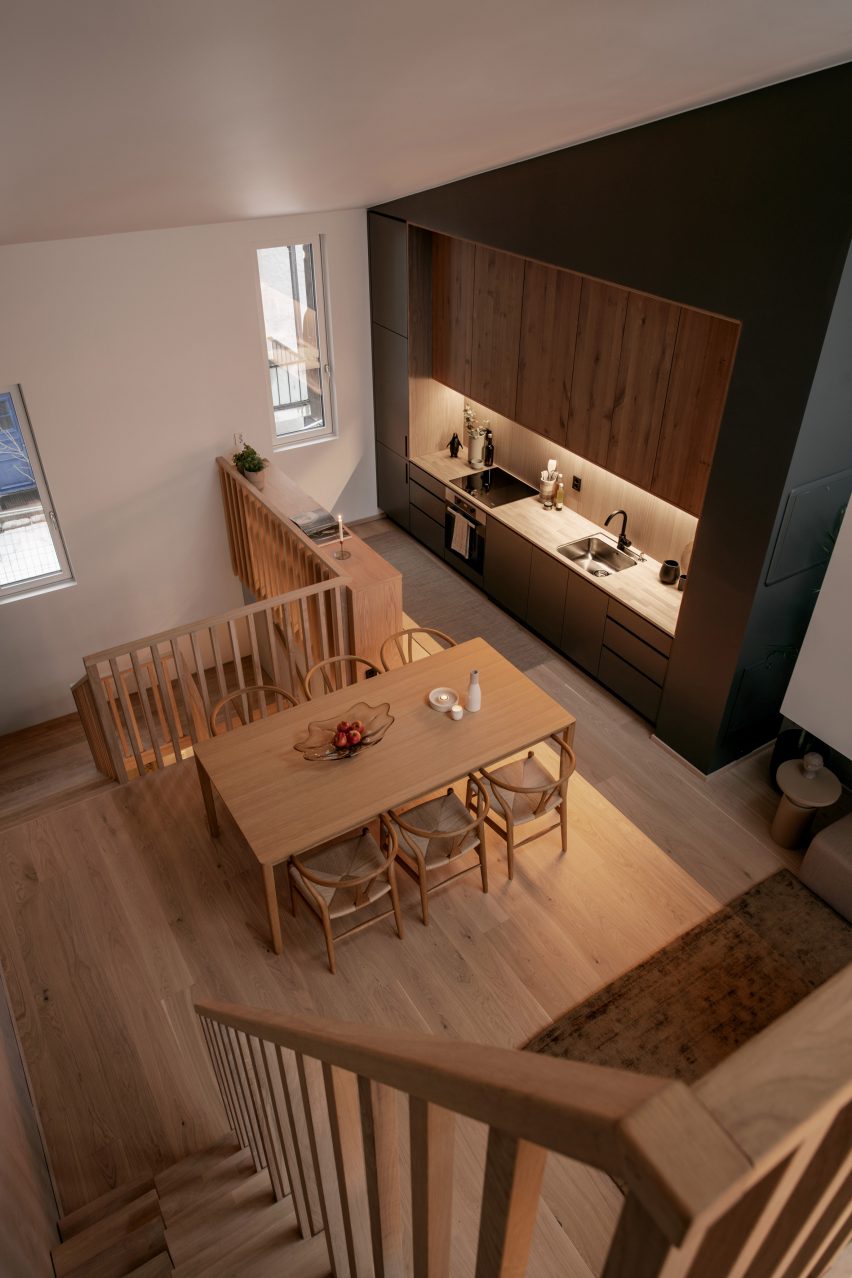
Throughout Sagene Wood Trade's interiors, oak furnishings and warm lighting contrast the cooler-toned exposed concrete walls and pastel-hued exterior of the homes.
"Internally, the widespread use of wood in the kitchen, stairs and floor speaks to the property's previous use, and stands in warm contrast to the bold concrete walls," said the studio.
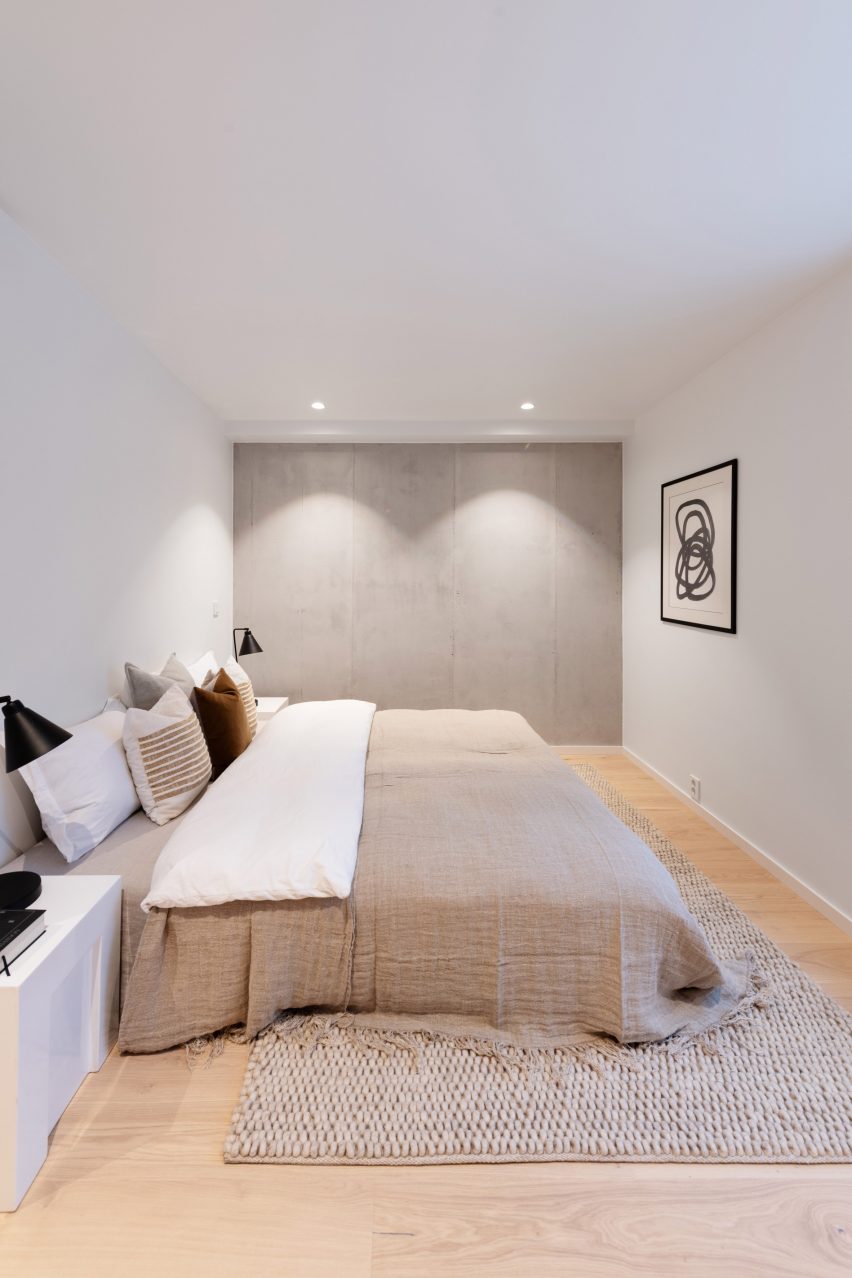
Other Norwegian homes recently featured on Dezeen include a cross-shaped house on an island and a weekend retreat with facades made from wooden offcuts.
The photography is by Ivar Kvaal.